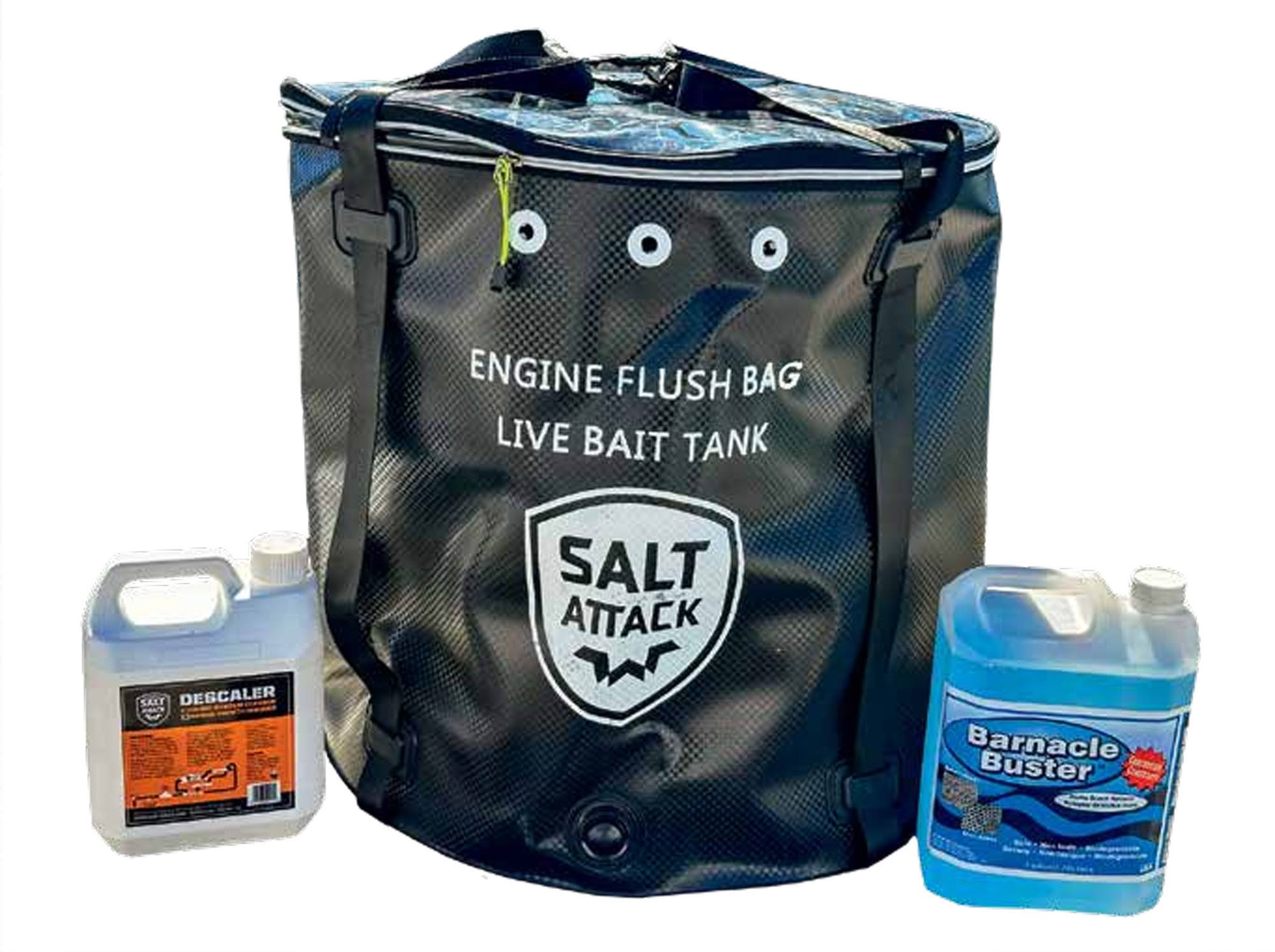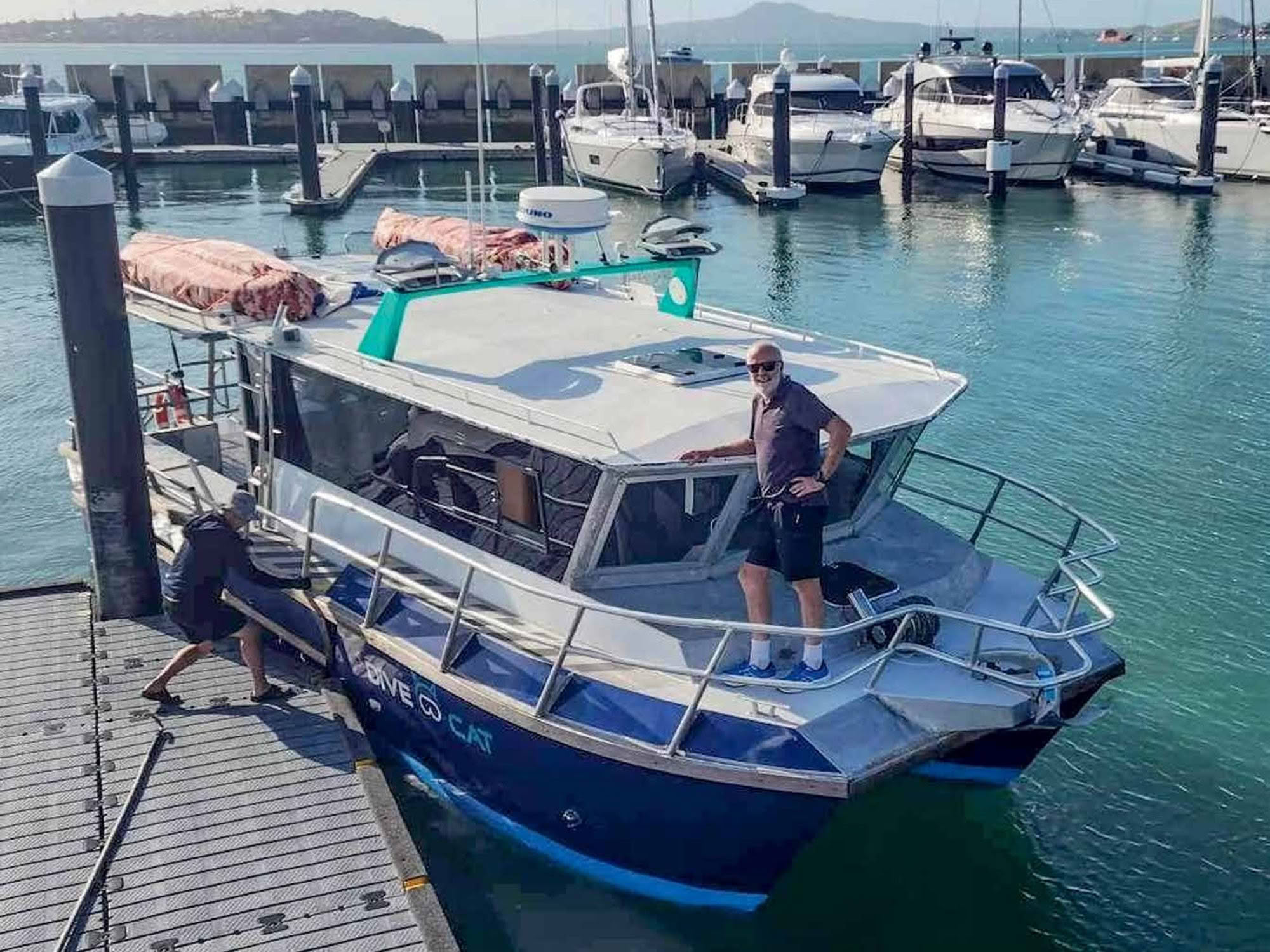

Boaties venturing offshore know how quickly a phone loses signal bars – and data apps become patchy at best. The combination of poor signal strength and the phone’s low antenna height limits communication with the closest cellular tower. But there is a solution.
Mobile phones have become an integral part of our lives and with services like Google Maps making printed roadmaps pretty much redundant, data is essential.
Similarly, when you’re out on the water, navigation aids, real-time weather updates, sea surface temperature maps and marine apps all rely on cellular data. So you need to boost the signal.
Installing a mobile booster antenna on your boat is a simple, relatively cheap solution, but there’s an inherent problem: no modern smartphone allows you to plug an external antenna directly into it. This means you also have to add a mobile router device to create a WiFi hotspot, running off its own network SIM card. You then have to configure your mobile to connect to that hotspot, and it only carries data – voice calls and text messages don’t work as they’re not carried over WiFi.

The Blackhawk cellular antenna, and right, the high-gain Omni marine antenna.
The best solution would be your own private cellular base station, something that will move around with your boat and provide five bars of cell coverage to your mobile device. That base station can use a large external antenna mounted high on the boat to greatly increase range and signal strength from even the weakest and most distant land-based cell tower. It should provide both 3G and 4G coverage (and ideally be 5G-ready as well) so your mobile phone can use whatever signal is best for voice, text and data services.
Another benefit of a local base station is that your mobile device’s battery will last much longer. When a cell phone detects a weak signal it boosts its own transmitting power, which considerably reduces the battery life. You might have noticed this out on the water: your cell phone runs low on battery power far faster than it does around home. With a strong local signal it will only need to use minimal power.
Powertec is an Australasian distributor of marine cellular booster solutions, with an office in Auckland. It provides a range of solutions for rural, industrial, camping and marine installations. The Cel-Fi Mobile Signal Repeater is the heart of its solution, and the technology was exhibited at the recent Fieldays expo at Mystery Creek.
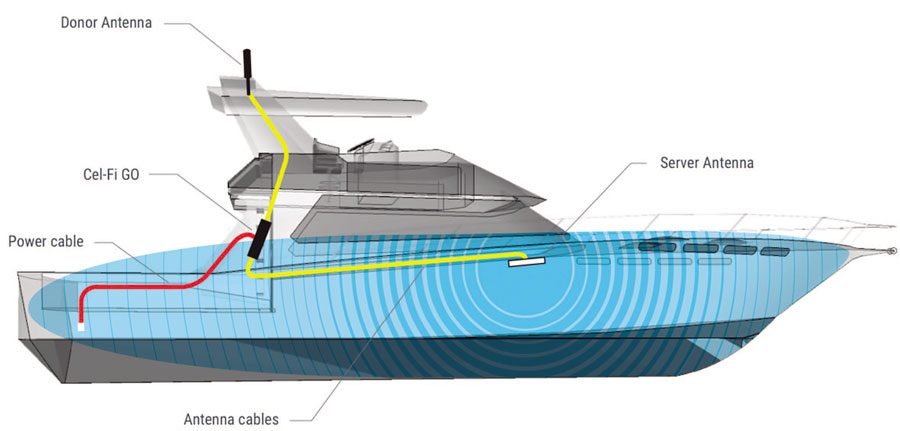
A typical installation on a launch.
Made in California, the Cel-Fi system combines three elements: an omni-directional high-gain external antenna, the Cel-Fi Go2 unit, and an internal cellular antenna to provide coverage everywhere in your boat. The external antenna operates much like a VHF antenna and is mounted as high as possible on the boat roof or on a mast. It talks to the cellular network and has a claimed range of up to 100km.
Georgia Crowley, Account Manager for Powertec in New Zealand, gave us a rundown of the system. They have been targeting the rural market in New Zealand, where mobile coverage is often either poor or non-existent. By installing the high-gain antenna in a suitable location farmers can achieve coverage over a much wider area.
Crowley says the marine market is another growth area, where the effective mobile range has declined ever since Spark (previously Telecom) decommissioned the old 025 network. Many commercial and game fishing boats had car-model base stations installed on board and have enjoyed excellent coverage even quite far offshore.

But the increased data speeds of the newer technologies (first 3G, then 4G and now 5G) each come with the trade-off of ever-reducing range. This is countered on land by building more cell towers, but that’s hard to do out at sea. So the solution is to take your own base station with you.
The Cel-Fi Go2 Network Repeater has a USA NEMA 4 rating, which is the equivalent to IP65 but with additional corrosion resistance. It can be installed just about anywhere on the boat and does not require any special protection.
The last component of the kit, the cellular antenna, needs to be suitably located so all the cabins on a larger boat get good coverage. This is really only an issue for larger vessels with multiple cabins. They have a surface mount option for this element – it’s a nice, discreet solution.
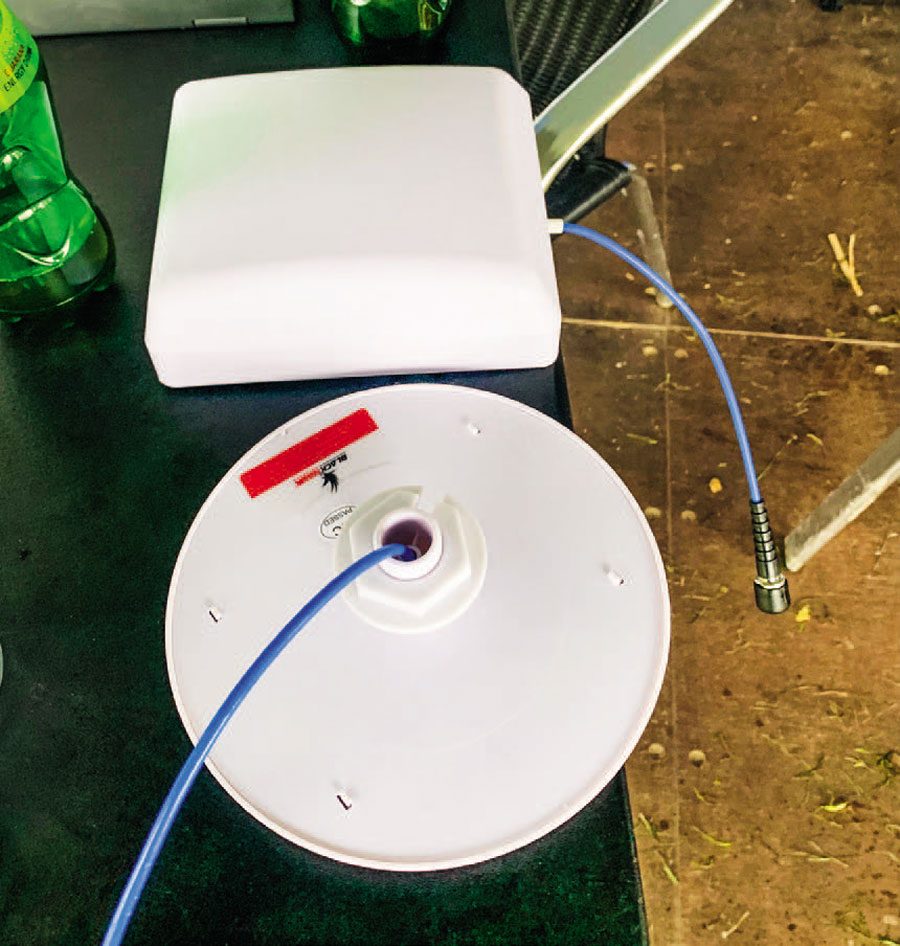
Once installed, the system essentially operates effectively as its own cell site – there is NO re- configuration required on your mobile devices. The device simply works as before, with all functions (data/ voice/text) fully operational.
It is network-specific – the Cel-Fi unit needs to be pre- configured for one of the mobile networks – Vodafone, Spark or 2Degrees. You install the unit for whichever is your network provider. But there are no running costs and all network charges are to the account of the mobile devices as per their own SIM cards.
The Powertec unit isn’t a cheap solution, coming in at a touch over $2,000 for the marine bundle, but the base unit can easily be disconnected and taken off the boat when not in use. It can then be multi-purposed for other applications – say at a bach or on a caravan.
With the extended range provided by the unit, it’s perfect for boats heading reasonably far off the coast, such as game fishing boats as well as commercial fishing vessels. Powertec also has a lower-cost option that provides either 3G or 4G coverage but not both at the same time – the unit has to be configured for the chosen option.

The Cel-Fi Go unit is a simple solution that will help you receive data further offshore.
3G will give greater range for voice and text and is suitable for low-data applications. But 4G provides a higher speed for data-rich applications – though it has a lower effective maximum range. The unit is also 5G-ready, for when our network providers roll this out beyond a couple of cities in New Zealand.
Powertec recommends that you have the unit installed by one of its accredited installers around the country, to ensure the device is achieving the best coverage possible. But its marine kits are pretty much plug-and-play, and come pre-bundled with all the connectors necessary. There is also a quick-start guide, so a suitably competent DIYer can easily install the components.
The caveat to this relates to the size or construction material of your vessel, since the location of the cellular antenna can be critical to getting good coverage in all areas of the boat. Aluminium does a very good job of blocking cellular signals – wrapping your phone in aluminium foil is one of those ‘hacks’ that litter the internet.
So if you have a larger boat with alloy (or steel) in the cabin walls you may need to explore various locations for this component, and this is where an experienced installer would certainly add value. This is not an issue for boats with wooden or fibreglass cabins, since cellular signals pass through these materials quite easily.
Although our cellular coverage is pretty good when close inshore, this solution would be perfect for anyone who heads further out or who takes their boat to more remote locations around the country. BNZ
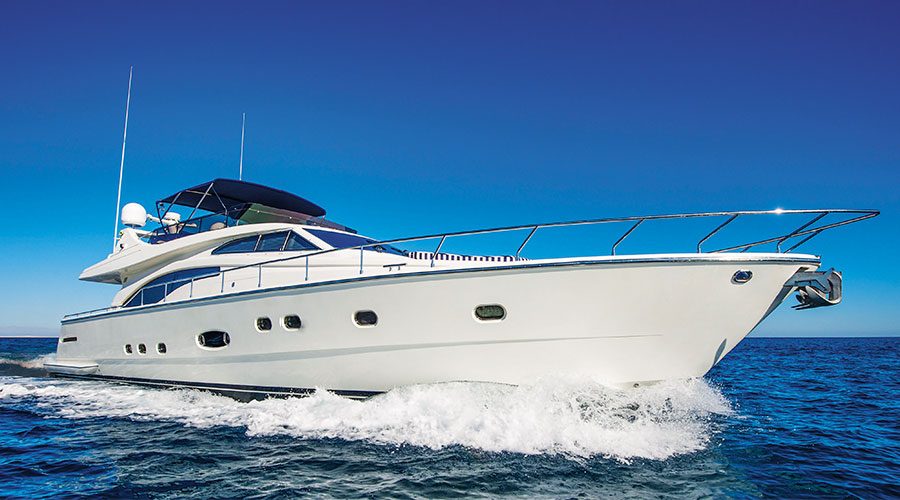
Bigger vessels may require a more extensive installation–but the principle’s the same.


